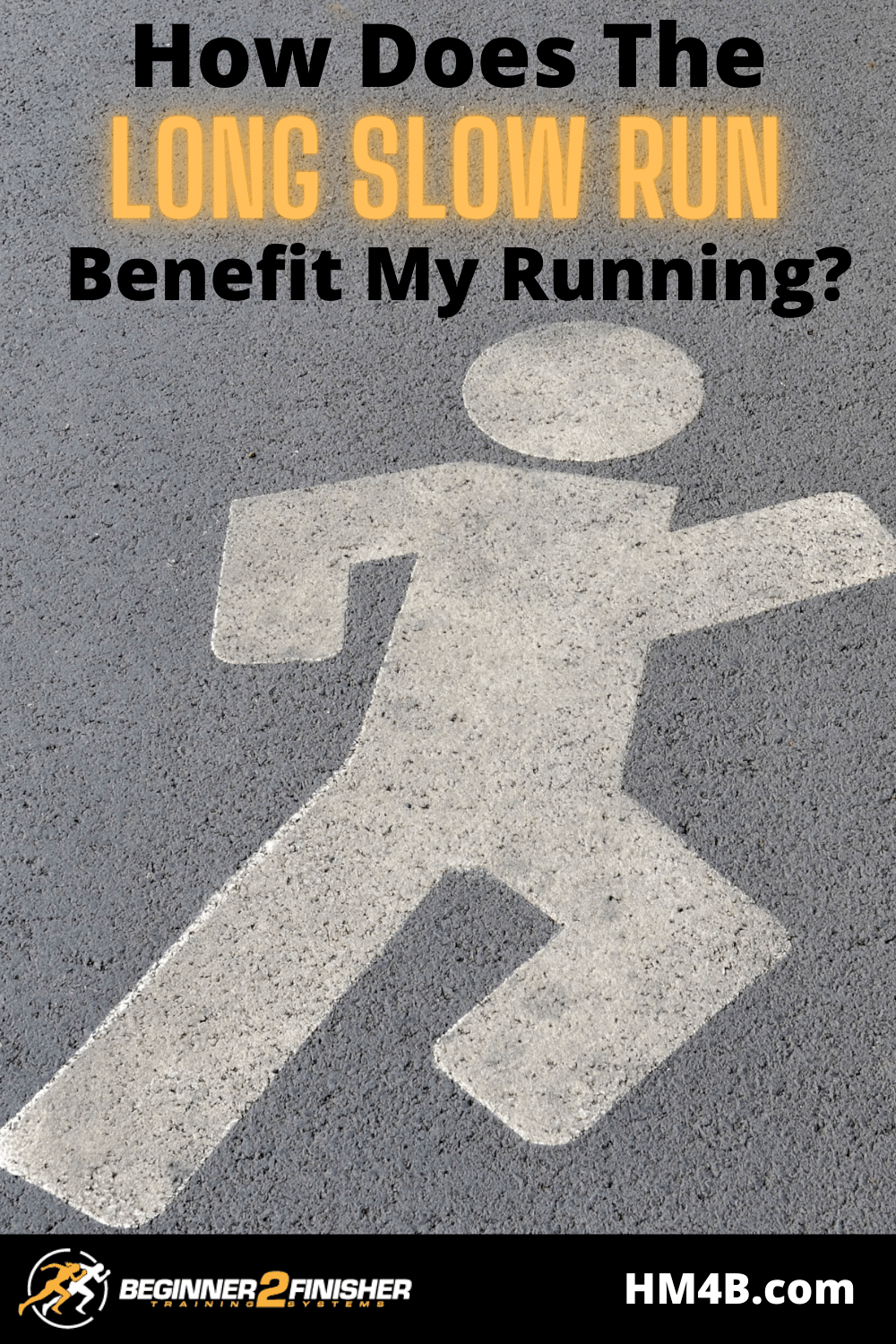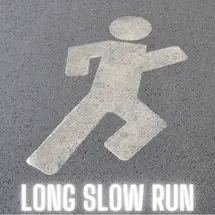So what is LSR pertaining to running?
The Long Slow Run is a training technique used by runners. It means incorporating long runs (anywhere from 5 to 25 miles or more) into your running routine to build endurance, strength, and improve your aerobic base. These runs are meant to be done at a slower pace than one’s regular running speed.
Are you a runner looking to improve your performance? Whether you’re a marathon runner or a sprinter, the Long Slow Run (LSR) is an excellent way to elevate your training. Read on to find out why.
What will LSR improve in my running?
If you’re searching for information on LSRs, chances are you’re hoping to improve your skill. So, let’s explore just how LSR can help your performance.
Long slow runs work to improve several different areas, all of which are integral components to running. The primary area of improvement is your aerobic base. Running at a slow pace for a long time or distance (generally around 50% longer than your regular runs) leads to an increase in the size and number of mitochondria in your body. The growth in these mitochondria means your use of oxygen will be more efficient during your LSRs and in everything else you do. Rather than huffing and puffing throughout the run, your body will learn to use oxygen better, improving your overall performance.
In addition to your respiratory system improvements, long slow runs also work on the cardiovascular and muscular systems. Your stamina will increase as you become used to longer distances and your muscles will strengthen when exercised and strained for extended periods of time.
Another benefit of incorporating a long slow run into your routine has to do with your running form. The longer you run, the more you build and cement a proper running form. You will get used to the movements and therefore, build good habits. Make sure you have a proper form when running long distances, so you don’t do the opposite and solidify bad habits!
Finally, long slow runs help with mental endurance which is often the most important aspect of running. You will push yourself to run for longer than you are used to and learn how to carry on past the point you thought you could.
Who coined the abbreviation LSR?
Ernst van Aaken, a German physician and coach is generally thought of as the father of long slow distance running which was first recognized during the mid-20th century.
What are the benefits of LSR running?
The main benefits of long slow runs are as follows:
- Improved stamina
- Better aerobic base
- Improved cardio
- Strengthening
- Better form
- Mental stamina
- Increased fatigue resistance
What are the drawbacks of LSR running?
As with all running, the drawbacks have to do with injury exposure. The longer you run, the more you open yourself up to accidents such as tripping, slipping, and falling, especially if you are a trail runner. You are also repeatedly hitting the ground for extended periods of time which can be very hard on the joints and bones. Additionally, you are straining muscles for longer than they are used to which can aggravate common runner’s problems such as shin splints (ways to reduce).
However, the slow pace at which these runs are meant to be performed at will help prevent unnecessary injury. In fact, their low intensity means you are less likely to develop injuries than when performing sprints or other training exercises that demand high-intensity levels.
These are in no way meant to be 20-mile sprints. Speed will undoubtedly hurt you more than it will help you when it comes to LSRs. The exercise is meant to be slow to make sure you are not straining yourself throughout and you will find injuries less common. Also, be sure to only incorporate 1 or 2 (at most) per week of these long runs and give yourself proper rest and recovery in between to avoid injury.
Is LSR running relatively safe?
Yes. LSR is a low-intensity workout. This means it’s much easier on the body than other forms of running. Again, however, the longer you run, the more you can tire yourself out or expose yourself to injury. To avoid this, make sure your long slow runs are slow. Measure the right pace for you and run at that pace consistently.
What does an LSR running session look like (an example of)?
Typically, your ideal LSR running pace will be about 1-2 minutes slower per mile than your regular running pace. What constitutes a “long” run for you depends on what kind of distances you usually run. Generally, these runs should be around 50% longer than your regular run. For instance, if you usually run 5 miles, your long slow run should be somewhere between 7 or 8 miles. On the other hand, if you’re typically a 10-miler you should be running 15 for these runs.
What is the Rate of Perceived Effort (RPE)?
The Rate of Perceived Effort (RPE) is a metric for exertion. It characterizes one’s effort while exercising on a scale of 1 to 10. 1 means the activity is light, for instance, a leisurely walk. 10 would be your very fastest sprint. If an activity sits on the lower end of the scale, you should be able to perform it for extended periods. Those on the higher end will only be able to be done in short bursts.
Why do runners use RPE?
RPE is an excellent measure for runners because it helps them evaluate where their training exercises should sit to best target certain areas. For instance, with LSR, the RPE helps indicate to a runner how much energy they should be exerting while running the long distances in numerical terms as opposed to guessing around. As speed is subjective, the RPE is a clearer metric to go by.
What (RPE) should LSRs take place at?
The ideal RPE for your long slow run should fall around 3. This is the exertion level where one can still hold a conversation and therefore, where a long slow run should stay at. Throughout the run (because it is quite long), you may dip into a 2 at times or speed up to a 4 and that is fine. Simply aim to rest in the 3 sweet spots.
Should you still be able to have a conversation with a running buddy during an LSR?
Yes! Being able to have a conversation with your running buddy is a great indicator that you’re at the right slow speed for you. The “Slow” in Long Slow Running is subjective as each athlete will have a different pace. Thus, the ability to have a conversation while running is one way people tend to identify their personal “slow” running speed.
So, grab your jogging buddy and strike up a conversation! Chatting also helps make the long run more enjoyable!
Related: How To Select Your Running Buddy (Ideal Traits)
Is LSR the same thing as the 80 in 80/20 running?
Yes. Both concepts pertain to the idea of “running slowly to run fast”. 80/20 running is a rule many runners live by which means 80% of their training consists of long slow runs and the remaining 20% are fast and/or harder.
Do marathoners and ultra-marathoners integrate LSR sessions into their training schedules?
Yes! LSR sessions are designed to help the body get used to long-distance runs and running for extended periods (as one does in a marathon). So, marathoners and ultra-marathoners absolutely integrate LSR sessions into their training schedules and these long slow runs are very long and slower than an athlete’s marathon or race pace.
Is LSR the same thing as a Long Duration Run or simply a long run?
LSR and Long Duration Runs or simply long runs are very similar though not the exact same entity. Long slow runs (as the name suggests) are slow. The training technique is built on the idea of a slow pace. While long-duration runs and long runs, generally don’t necessarily have to be slow. They can be run at a race pace to build speed and endurance simultaneously or as mock races. The difference between the two is that LSRs are run slowly by definition.
Is LSRs Ideal for beginner runners?
Not necessarily. If a beginner runner assumes LSRs are a good way to start because they are slow, they may find themselves surprised. While LSRs are slow which may be a good pace to start at for beginners, they are also long by design. Oftentimes, beginners find running exhausting. The most challenging part in any runner’s journey will likely have to do with their endurance. Therefore, starting off with a long run may not be the best decision. Long slow runs are best for more seasoned runners as a training technique than for beginners.
Related: How Far Should New Runners Run?
Conclusion
If you were wondering “what is LSR in running?”, we hope this article has answered your questions. The training technique has been used for ages by runners of all types. Whether you’re a 100-meter sprinter or a triathlon athlete, adding low slow runs to your routine could change your performance in incredible ways.
Are You Looking For A Half Marathon Training Schedule?
12-week/15-week beginner half marathon training plan (free sign up required)
8-week beginner half marathon training plan
8-week intermediate half marathon training plan (easily run a 5K)
4-week advanced half marathon training plan (already run 6+ mile long runs)
Half marathon walking training plans complete with pacing charts
| Help support me and subscribe to my YouTube channel. YouTube video - 30 ways to make your runs less painful! Coach Scott's Credentials:
|
To sign up for a FREE half marathon training schedule, log sheet, and pace predictor CLICK HERE.

Recommended gear for runners
Connect with me:
| facebook.com/BeginnerToFinisher/ |
References
https://www.virtualrunneruk.com/the-benefits-of-long-slow-distance-runs/



2 thoughts on “What Is LSR In Running? Can It Improve My Running?”